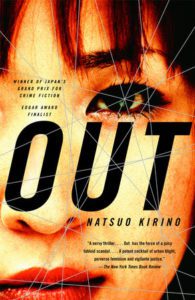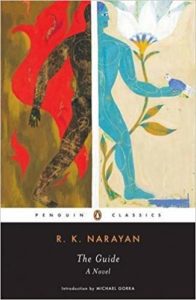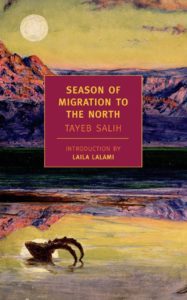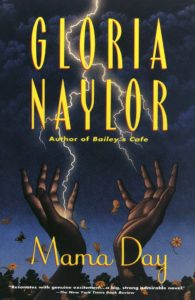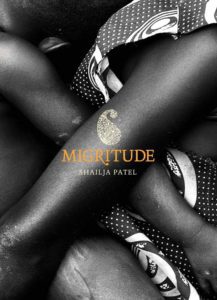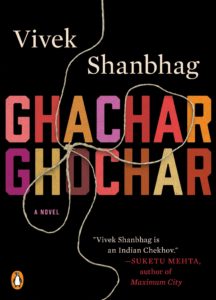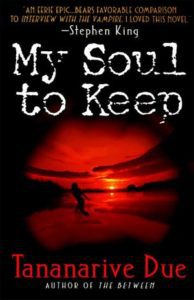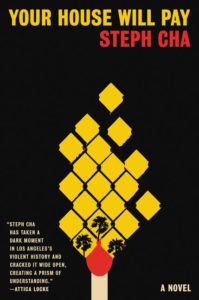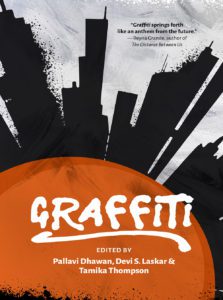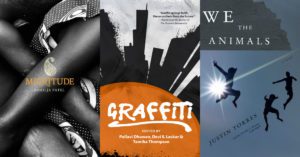
Three years ago, when the country took a socio-political turn that many of us had not been expecting, we, a group of writers of color, created a safe space of creative play for ourselves. Out of our collective frustrations with what the literary world and the world at large were asking of us, we created the artists-of-color collective POC United, and launched an anthology series. Our inaugural collection is Graffiti, released in October from Aunt Lute Books. We focused on short stories, essays, and poems, all by writers of color, and we built a multi-genre text removed from the white gaze, that centers neither whiteness nor anti-whiteness. This work helped us feel as if we truly were united, heard, and understood by one another.
Now that Graffiti is out in the world and we are ramping up to create the next installment in our series, we asked some of our contributors to join us in recommending books that allow us to remain grounded in work that does not consider the white gaze.
***
Out by Natsuo Kirino
– Recommended by Graffiti contributor Laura Lucas
Every other year or so, I pull my copy of Natsuo Kirino’s Out off the shelf and reread it. I don’t read a lot of crime fiction, but there’s always a place for Out on my bookshelf. Each character is beautifully described in shapes and spaces: the breadth and depth of her forehead, the angle of her nose, the distance between one facial feature and another. Not just her height, but her stance, carriage and stature. Not just her size, but her movement and the way she inhabits her body. Out manages to tell an excellent crime story while also incorporating multi-dimensional character descriptions that never slow the story down. If anything, it is sped up by the foreshadowing in delicate features, the stubbornness of a full lip.
The Guide by R. K. Narayan
– Recommended by Graffiti editor Pallavi Dhawan
R.K. Narayan’s The Guide tells the story of a man named Raju who, upon release from prison, finds respite on the steps of an abandoned temple only to be mistaken for a saint by a local villager. Soon, hordes of devotees descend upon Raju, who finds himself in an impossible predicament: Tell the truth about his past and forego the comforts of sainthood bestowed upon him by the villagers, or go along with the charade. Narayan does something remarkable in the telling of Raju’s story, building suspense through alternating points of view. Raju shares the story of his past through the first-person “I”, while the Raju of the present day—the holy man—is channeled through third person, leaving the reader with the distinct impression that, in the final analysis, “he” and “I” are not that different after all. Narayan outdoes the great absurdists without inserting anything truly impossible. No one turns into an insect (Kafka) or wakes up without a nose (Gogol). Instead, Narayan relies on the inherent contradictions of daily life in India to create Raju’s world—a world that does not rely on the traditional tropes of an impoverished, wrecked country, but on one that contains multiple co-existing realities. For Raju (and perhaps for Narayan, whose writing reflects an ease of existing far away from whiteness), the ultimate question is not what it means to be Indian, but what it means to be. And when I find my way out of the white gaze, this is also my question.
The Hidden Blade and My Beautiful Enemy by Sherry Thomas
– Recommended by Graffiti contributor Lin Y. Leong
For me, reading at its best is not just about escape, but homecoming and recognition; not a turning away, but a turning to. Never is this truer than in genre fiction. Romance and fantasy fiction in particular are often dismissed as escapism—as if this is a bad thing. But add to that their core elements of love and imagination and you have stories that engage your heart and awaken in you possibilities you never imagined for yourself.
Sherry Thomas’s Heart of Blade duology epitomizes the best of the genres I adore: historical romance, action, and adventure, edging upon just this side of fantasy. It starts with The Hidden Blade, which tells the story of a young Chinese girl growing up in imperial Peking who trains to be an assassin, and a young English boy who escapes the grip of his sadistic family. Their stories intersect in My Beautiful Enemy. Moving between Chinese Turkestan and England, narrative past and present, Ying-ying/Catherine Blade and Leighton Atwood circle one another, each unsure whether the other is friend or foe, or something more.
And her writing! Lyrical and sharp, Thomas has absolute control over narrative, tension, and conflict. She’s able to seize you from a thousand miles away and twist your heart into tear-pricking angst with characters who are so humanely flawed. It’s rare to find Asian characters in English-language genre novels, let alone a strong Chinese heroine who drives the story and is not merely there to give it a touch of the exotic or be a tragic figure in a cautionary tale. To see a character who shares your own ethnicity in a tale of love and adventure is enthralling; to see them triumph to a happy ending is transformative.
Itzá by Rios de la Luz
– Recommended by Graffiti contributor Monique Quintana
In her first novella, Itzá, Rios de la Luz centers four generations of women who exemplify the brown body eternal. Each page is an encantada, a road witch, a water rite, and a border map. Here is both a new and ancient phantasmagoric: Araceli, Rubí, Magdalena, Marisol, and Araceli, again. In this non-linear narrative, the crimes of colonization cannot temper the dreamscape of the ancestors: “We can scream at the sky or just pray.” Here we find leaf-laden floating beds in forests and an overturning of the white fairy-tale trope, the supine woman who is inactive and waiting for a prince. Instead, we find a mother who gets prowess and reclamation in timely death, a psychopomp for her daughter decedents and their stories.
Season of Migration to the North by Tayeb Salih
– Recommended by Graffiti contributor Bhaskar Caduveti Rao
In Tayeb Salih’s Season of Migration to the North, the unnamed narrator returns home to his village in Sudan after seven years of studying poetry in London.
Amidst the simple villagers, his friends and family, the narrator meets a mysterious stranger, Mustafa Sa’eed. When he catches Sa’eed one night, drunk and reciting English poetry, he forces Sa’eed to reveal his past. Thus begins a tightly woven story of the narrator’s life in post-colonial Sudan with flashbacks of Mustafa Sa’eed’s journey, thirty years ago.
Written almost fifty years ago, this lyrical novel feels fresh and radical today. With clear prose, masterful use of time, and in only 137 lyrical pages, we see in the dichotomy of the lives of the narrator and Mustafa Sa’eed—who straddle the East and the West, the North and the South, English and Arabic, the traditional and the modern—the universality of human life.
Mama Day by Gloria Naylor
– Recommended by Graffiti contributor L. Penelope
While I haven’t been tempted to center whiteness or consider the white gaze in my writing, an early book that really inspired me and one which centers blackness is Mama Day by Gloria Naylor. The supernatural and mythic elements spoke to the part of me which loves the fantastic. The story centers around African American family ties and the tension that often arises between modern life and the traditions of the past.
We the Animals by Justin Torres
– Recommended by Graffiti contributor Kanika Punwani Sharma
Written in an often-poetic first person plural, We the Animals, Justin Torres’s haunting, semi-autobiographical debut, follows three mixed-race brothers (the “we” of the title) living in a mostly-white working-class neighborhood. Born to a Puerto Rican father—often “meticulous” in his violence—and a “confused goose” of a white mother, the boys are each other’s only anchors. Given the racial set-ups, I know you might be thinking this is a novel that falls solidly within the white gaze—but the story surprises you by turning its gaze inward at this family and their personal dynamics rather than outward at the dynamics with their external community and their mixed identities.
The brothers travel as one: a clan, a litter of wild dogs growling and nipping at one another’s heels, but always roaming together. Until they’re not. Until “we” fragments into “I” and “them” as the narrator enters his teen years and discovers truths about himself that are unfathomable to his family. The novel’s study of this fragmentation of self that occurs when those you consider your own turn against you is its biggest success and greatest tragedy. It is a testament to the idea that sometimes you can be othered by those who are most like you—those with, in this case, literally the same blood running through their veins—and that is often the most catastrophic and wrenching dislocation.
The slim novel is an easy one-sitting read with sentences that shake and jive, side-step and (much like the boys’ father in one memorable scene) drunkenly mambo across the page. They accelerate, then slow down, then rise again, moving to crescendo, and ultimately culminating in a long, solitary howl—the cries of a lone wolf separated from his pack. Its echoes stayed with me long after the final page had been turned, the book put down.
Migritude by Shailja Patel
– Recommended by Graffiti editor Devi S. Laskar
My go-to book when I want to escape the white gaze, and deep dive into unflinching looks about race and racism, migration and political history, is Shailja Patel’s Migritude. First a one-woman show that has received acclaim all over the world, it was published as a book in 2010. Lucky us, it can now be read over and again, and we readers can become engrossed in Patel’s story—part-memoir, part poetic prose—of migration from Kenya to England and then to California, and get inspired to write our hybrid histories.
Ghachar Ghochar by Vivek Shanbhag
-Recommended by Graffiti contributor Kirin Khan
Perhaps because colonialism is so imbedded in the past and present of the subcontinent, and because stories filled with orientalism and hippie fantasies of India are still selling, it can be difficult to find work outside the white gaze, written for us, by us. If you don’t know where to look, I recommend you start with Ghachar Ghochar.
The first of Vivek Shanbhag’s novels to be published in English (the author writes in the South Indian language Kannada), Ghachar Ghochar centers on a near-destitute family pulled into wealth by an industrious uncle, but this is not a rags-to-riches tale. Instead, the claustrophobically tight story explores what happens when outsiders threaten the poverty-bonded family’s dynamic, and potentially their finances, and the lengths individuals will go in the name of family.
Ghachar Ghochar even has some scenes centered on food without ever falling into the stereotypes of commercial South Asian literature. Its form is unconventional: a concise novella with short, first-person narration. What makes Ghachar Ghochar so unsettling lies in the unspoken—the realization of what we are not being told, what the narrator will not admit to himself, is cold, dark, terrifying. This is a story outside the Western gaze, but it is no escape fantasy. It does not give us the safe observation of “another culture.” The narrative of wealth perverting morality, of family loyalty and ruin, is as pervasive and ancient as capitalism, as colonialism, as greed and fear. How exciting it is to remember there are stories outside the familiar, stories that suck us in and show us something we have never seen before—alien, until we realize that actually, it is our own sinew we are looking at, our own viscera the writer has shown us.
My Soul to Keep by Tananarive Due (African Immortals Book #1)
– Recommended by Graffiti editor Tamika Thompson
One of the things I love about so-called genre fiction is its ability to tell a story about characters of color without making their race/ethnicity/heritage the focus of the book. And since I write and read horror, it is with pleasure that I recommend the work of Tananarive Due.
There are four books in Due’s African Immortals series—My Soul to Keep, The Living Blood, Blood Colony, and My Soul to Take—and you should read them all. Stephen King called the first installment an “eerie epic” that bears “favorable comparison to Interview with the Vampire” by Anne Rice. King also went on to say he loved the novel, and a few pages in it’s easy to see why.
My Soul to Keep begins the harrowing tale of David and Jessica, and from the beginning there is a mysterious quality to David. Yet Jessica is madly in love with him, which allows the reader to fall for him as well. They have built a life together, complete with a home, a young daughter named Kira, and a pet dog. The problem? David is immortal. Jessica is not. Not only does Jessica discover David’s immortal secret (and that he might be dangerous!), but she also learns that he wants Jessica and Kira to be immortal as well. These sound like complex and gut-wrenching choices… because they are! This book left me breathless. The climax was ripped from my worst nightmare and haunts me to this day.
Your House Will Pay by Steph Cha
– Recommended by Graffiti contributor Sarah LaBrie
Steph Cha’s Your House Will Pay takes on long-simmering tensions between a black family and a Korean family in Los Angeles in the years following the Watts uprisings. As tightly plotted as it is gorgeously written, it’s been rightly heralded for setting the course for a more honest and multidimensional literature of the city’s history. It’s also one of the first contemporary works of literary fiction about LA I’ve read in recent memory set in the city I live in and know—not one in which black and Asian characters are bit players on a predominantly white stage, but one that firmly centers two communities of color and the drama that plays out between them over decades and generations.
And to close out this list, we’ve included Graffiti, edited by Pallavi Dhawan, Devi S. Laskar, and Tamika Thompson!
To create this inaugural anthology from artist collective POC United, the editors of Graffiti gave the contributors a special challenge: to write in a way that centers neither “whiteness” nor “anti-whiteness” and that is not limited by their struggle, their oppression, or how their characters will be received by the white imagination. The results are joyous and mind-expanding. Through poetry, short stories, and essays, the works in Graffiti expose lives that move in unexpected ways, rendering characters who don’t fit cultural tropes. Graffiti shows what writers of color do when they are invited to scribble, scrawl, romanticize, and speculate without being politicized or exoticized.

